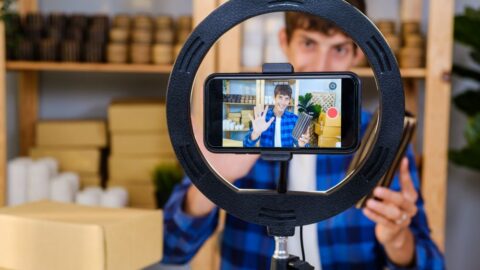The return to brick-and-mortar will be a slow, steady process, and preparing stores for the great return will be as much about making shoppers comfortable as it will be about enticing them back. Retailers will need to maintain elevated safety precautions and further improve in-store fulfillment, while at the same time busting any type of friction more forcefully than ever. Fortunately, many of the same practices that carried retailers through the pandemic will continue to serve them well in the coming months.
“The retailers that really invested in buy online, pick up in-store (BOPIS), shops-within-shops in larger footprint locations or even experiential retail — those retailers really started to thrive during this time,” said Joe Scaretta, Co-CEO and Founder of CS Hudson in an interview with Retail TouchPoints. “You look at ULTA Beauty or DICK’S Sporting Goods during the pandemic and they crushed it. These retailers are doing really well because they’re focusing on the needs of the consumer right now, where a lot of retailers didn’t for a long time.”
Some of the most important efforts retailers will need to make to meet shoppers’ needs include:
- Maintaining safety during the return: Safety will remain top of mind even as shoppers return to their old habits, and retailers need to be prepared to make them feel comfortable without sacrificing convenience;
- Making new services feel natural: Many retailers quickly added BOPIS, curbside and similar fulfillment options, and now they must transform them from a hastily-launched necessity to an integral part of the brand; and
- Putting the fun back in shopping: Shoppers want to get back out and have a good time, and retailers need to meet this desire by both creating enjoyable experiences and making basic trips as frictionless as possible.
Cleanliness Will be Just as Important to Returning Shoppers
Making the shopping experience safe through social distancing while welcoming a larger number of shoppers will be a fresh challenge for retailers as the pandemic fades. Rising to the occasion will require careful consideration of both store layouts (to keep the experience orderly and pleasant) and customer service (to minimize frustrating friction).
“It’s definitely going to be a balancing act, and I think it has to be a very coordinated effort between both the design of the space and the interactions of sales associates with customers,” said Lucy Baraquio, VP at CallisonRTKL in an interview with Retail TouchPoints. “There needs to be an up-leveling of the communication skills and customer-facing behaviors for sales associates. They have to be able to very seamlessly direct and regulate traffic within the stores without alienating customers or shortening their dwell times.”
However, retailers shouldn’t expect a sudden rush of shoppers eager to meander through the aisles as they browse. While retailers need to be prepared for increased traffic, they should expect most shoppers’ current hesitation to linger, at least during the next few months. “If they’re coming into a store it’s because they have a very specific need, and it’s going to be a quick conversation with someone and then they’re out,” said Baraquio.
With this in mind, highly visible safety and hygiene measures will be extremely important for the foreseeable future. Shoppers will want more than to see that social distancing and occupancy limits are in place; they will want to see associates taking physical measures to keep the sales floor disinfected.
“I think the stain of what’s going on is going to be worn for a long time, and as a consumer you want to see how clean the space is.” said Scaretta. “It used to be taboo for a retailer’s cleaning crew to be there cleaning up a space when the space was occupied. Now consumers look for that.”
In-Store Fulfillment is Now Part of the Brand, Not a Convenient Extra
In-store fulfillment is here to stay, and retailers need to fit operations seamlessly into the overall shopping experience — while also making sure they’re profitable in the long run. Retailers like Target were ahead of the game with investment and preparation, and they can serve as models for how a successful program can be run. Those retailers that quickly threw together a program after lockdowns began will need to spend the next year refining and rethinking their plans.
“There were retailers out there that were already in the planning stages to begin with who just accelerated things, but others had no plan and threw them together,” said Scaretta. “I think there will be evaluation over the next six to 12 months of how the program is working, by listening to and serving consumers, in order to understand what works and what hasn’t worked. Then you rebuild the process to layer in stronger technology and infrastructure and leveraging certain areas of the store.”
One of the true tests of an in-store fulfillment program’s success is simple: do customers like it? Even shoppers who are new to BOPIS and curbside will feel the inconvenience caused by a half-baked pickup process, so retailers need to make sure their newest omnichannel offerings feel like a natural extension of both the in-store and online shopping experiences.
“One of the things that will be required is that retailers improve their wayfinding, signage and the use of their brand collateral to create a more seamless experience that doesn’t feel like an afterthought,” said Baraquio. “In a lot of cases right now it’s a temporary fix that looks and feels like one, which is not necessarily helping the brand in any way — it’s just sort of filling a need. I think the practice will be elevated to more of a design exercise that works with the brand language.”
People Want Experiences, From Safe Demos to Pleasant Shopping Trips
The most compelling reason many will have to return to stores is the need to get out of the house after being locked away for a year or more. Retailers should be ready to welcome customers back with open arms and safe experiences, which means providing demos, fitting rooms and play areas that still maintain social distancing protocols.
“As a consumer, I think we’re starved for interaction,” said Scaretta. “Even though we can’t be in close quarters with large numbers of people, some level of in-store ‘play’ is really important. Look at some of the sporting goods retailers. Being able to try out sporting goods within a space at an Adidas or Nike — shooting basketball hoops and getting back out and actually using some of the materials — is really important.”
Of course, not every retailer has the inventory or floor space to let shoppers spread out for a pickup game. What everyone can do, however, is leverage technology to make shopping an even more compelling experience. A strong omnichannel presence doesn’t have the same unique shine as an in-store basketball court, but it can still earn the same level of appreciation from busy shoppers.
“I do think it’s going to be more of the same, with just an increase in the skill with which retailers do it,” said Baraquio. “The technology will become more sophisticated, become less of an obstacle and more something that enhances the customer experience. It will be an extension of what people experience online much more so than it is today, with the safety protocols and the ability to give people the option to have more touchless interactions.”













